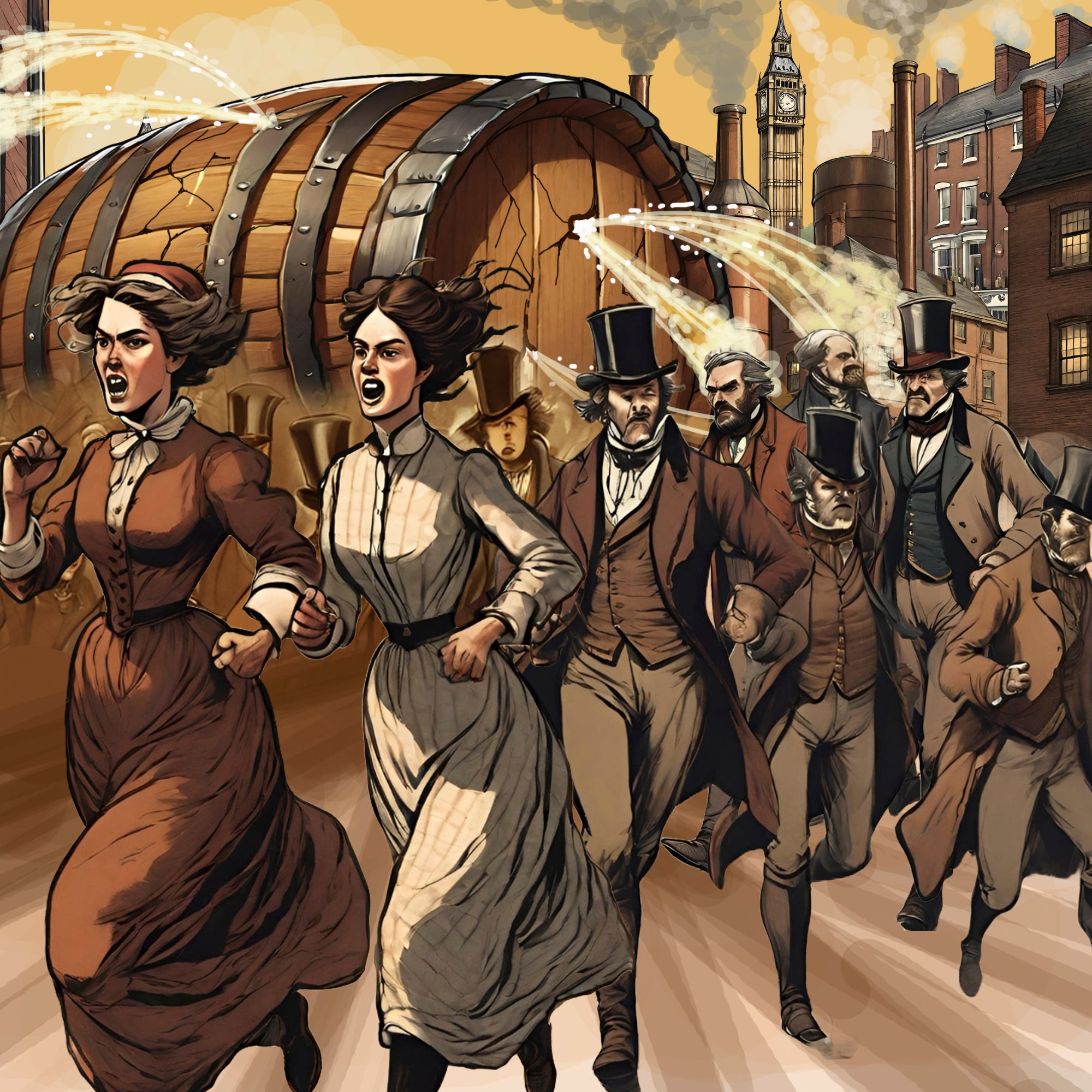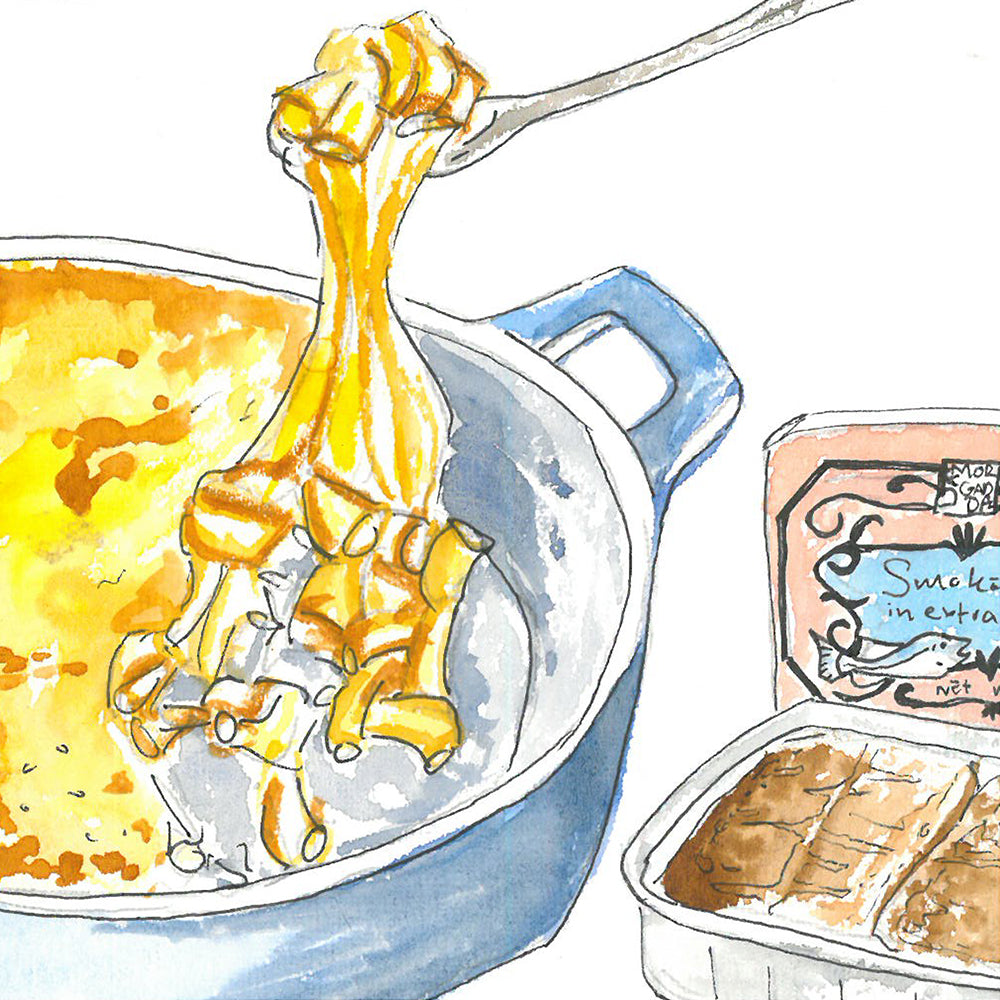London, the bustling metropolis, is no stranger to tales of intrigue, tragedy, and curious historical events. Among these, one of the most unusual is the Beer Flood of London. In the early 19th century, an incident occurred that resulted in a tidal wave of beer rushing through the streets of London. This remarkable event left an indelible mark on the city's history, not just for the chaos it caused but also for the unusual circumstances surrounding it. This article takes you on a journey back in time to explore the untold story of the London Beer Floods.
The London of the Early 19th Century
To understand the Beer Floods, we need to transport ourselves to the London of the early 19th century. It was a city in the midst of industrialization, with its population booming, factories sprouting, and beer being the quintessential drink of the masses. London's skyline was a web of chimney stacks, and the beer industry was at its zenith, brewing beer at an unprecedented scale.
The city's residents, from the laborers to the aristocrats, sought solace in the soothing embrace of beer. It was not merely a beverage; it was a societal glue that brought people together in taverns, pubs, and homes. The breweries of London, including the Horseshoe Brewery, played an integral role in quenching the city's insatiable thirst for their favourite tipple.
The intoxicating elixir became a symbol of camaraderie, a respite from the challenges of an ever-expanding and rapidly changing city.
The Horseshoe Brewery
The Horseshoe Brewery, one of London’s most renowned breweries during the 19th century, had its origins rooted in the entrepreneurial spirit of its founders. The brewery was established by Sir Henry Meux who, along with his partners, a group of stargazing visionaries, saw the potential of the burgeoning beer industry in the centre of London.
Sir Henry Meux, a prominent figure of his time, was not only an astute businessman but also a well-connected and affluent fellow. He came from a family with a history of successful brewing, and he recognized the opportunities presented by the growing demand for beer in the thriving metropolis of London.
Meux's partners in this venture included influential figures from various sectors, ranging from finance to trade. Their combined expertise and resources allowed them to establish a brewery that would eventually become a cornerstone of London's brewing industry (a great big cornerstone at that).
One of the innovations ushered under their watch were gargantuan oak fermentation tuns. These tuns, standing tall as houses and capable of holding over 300,000 gallons of beer - uh oh, foreshadowing - were not only practical for large-scale production but also a testament to their forward-thinking approach.
The Horseshoe Brewery’s reputation grew as it produced beer on an unprecedented scale, supplying a thirsty and ever-expanding city. This reputation and enticing of the masses tied in perfectly with the founders’ vision of wanting not only a production hub but a community centre. The brewery's location within a densely populated urban area was a deliberate choice, allowing it to become an integral part of the neighbourhood. It employed a significant workforce, accommodated the gathering of locals, and, until that fateful day in 1814, was viewed as a symbol of prosperity and progress.
So far, this storied brew contains aspiration, a touch of overreaching, gargantuan gaskets of beer, and a community that resides on the doorstep of disaster.
Let’s see how this all play out.
The Event
On Monday 17th October 1814, the (un)thinkable happened. The 22 foot high wooden fermentation tank installed in the brewery cratered open, releasing a tsunami of beer into the streets around Tottenham Court Road.
The catalyst for chaos came when one of the enormous metal rings used to hold the tun together began to fail. The sound of the snapping band ricocheted through the brewery, warning workers of the madness to come. But before anyone could make haste and see the issue fixed, the tun ruptured, expelling hot fermented ale onto the brewery floor. The force of the explosive ale was so great that it steamrolled the back wall of the brewery and flooded onto the streets.
This first onslaught of beer gushed through the brewery walls, whilst at the same time, tearing open more tuns along the way. The full measure of the yeasty tidal wave as it spewed out onto Tottenham Court Road was 320,000 gallons. This inconceivable swell combined with the densely populated surroundings of the brewery, culminated in insane scenes as the surging beer flew throughout the streets.
The nature of the area, St Giles Rookery, a densely populated London Slum consisting of crowded houses and cheap tenements, meant that the damage multiplied. The flood reached George Street and New Street within minutes, licking them with the amber tongue of escaped ale. The 15 foot high wave of beer and debris overwhelmed the basements of two houses, causing them to collapse. In one of the houses, Mary Banfield and her daughter Hannah were taking tea when the flood hit; both were killed.
In the basement of another home, an Irish wake was being held for a two year old boy who had died the previous day. The four mourners were all killed. The wave also erased the wall of the Tavistock Arms pub, trapping teenage barmaid Eleanour Cooper in the rubble. In all, eight people were killed. Three brewery workers were rescued from the waist-high flood and another was pulled alive from the rubble.
With all the excitement of this ‘free beer’ hundreds of people began scooping the liquid from the streets in whatever containers they could fine. Most drank their shares from pans and saucers whilst others took it straight from the street. In the days after the flood, there were reports of a ninth victim, an anonymous unfortunate who succumbed to alcohol poisoning.
The streets of London stank of beer for months afterwards. Those who had lost loved ones resorted to displaying their bodies for income. On one occasion, the floor beneath a dour exhibition of bodies collapsed beneath the weight of spectators. Those gathered were plunge into the house’s cellar, submerged waist high in a reservoir of beer still underground.
Such reminders of the disaster persisted and, until someone could be held accountable for the tragedy, it seemed its memory would endure.
The Aftermath
In the wake of the disaster, legal proceedings were initiated. The brewery owners were put on trial, but the outcome was somewhat unexpected. Remarkably, the jury ruled that the accident was an "Act of God" – a natural event beyond human control. This decision led to the brewery being absolved of responsibility and any potential financial liability.
Despite this verdict, public opinion was divided. Some believed that justice was not served and that the brewery should be held accountable for the tragedy. The legal response to the Beer Flood remains a subject of debate and discussion even today.
Yet, despite the evolving attitudes toward corporate responsibility in response to gross negligence, one aspect of this disaster remains unchanged: the rich get richer (or stay about as rich as before.)
The flood cost the brewery around £23000 (approx. £1.25 million today). However the company were able to reclaim the excise duty paid on the beer, which saved them from bankruptcy. They were also granted ₤7,250 (₤400,000 today) as compensation for the barrels of beer lost.
The Beer Flood of 1814 was more than just a bizarre accident; it was a reflection of the times in which it occurred and the times to come. Industrial Revolution set the scene more massive expansion and little time spent looking back. Today, the same surrealism occurs. There are inquests and questions, short sentences, and slaps on the wrist administers – but all in all, the status quo survives.
Conclusion
Move fast and break things. Act now, ask for permission later. The same concepts abound today as they did a hundred years. The only difference is that whereas in the past the tragedy was reserved for those people looking to make ends meet, today it is ballooned up on an astronomical level. Where not only do we point our fingers at those who take advantage of others, but more often than not, we applaud them, and if not applaud, then enable. We worship the products they provide us. We put them on pedestals and fear for the day those products and services are taken away.
We want to eliminate tragedies tied to greed. But until we can make sense of what we can do without, the problems of yesterday will become the disasters of tomorrow. The same house-sized tun, pumping convenience to our doorsteps, is out there today – see if you can spot it.


